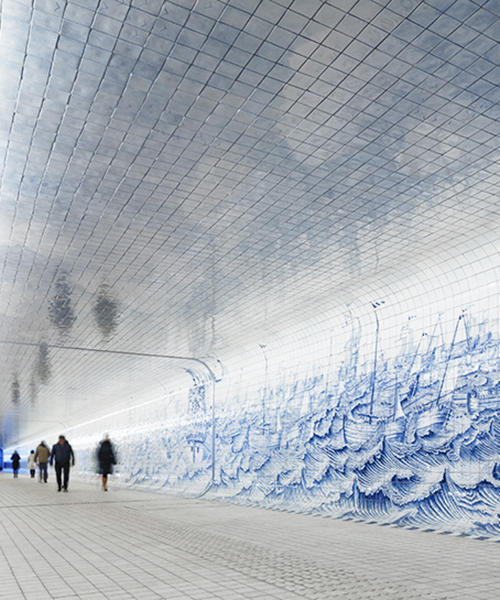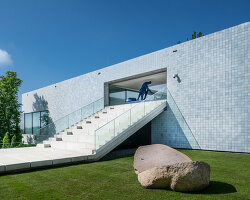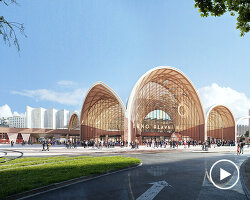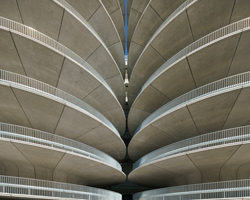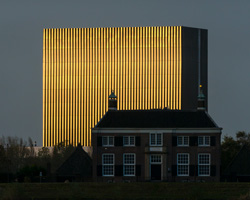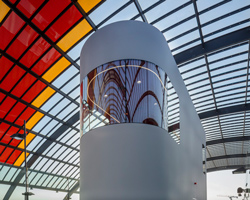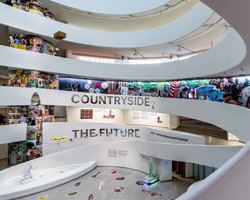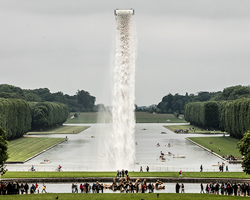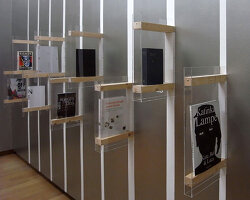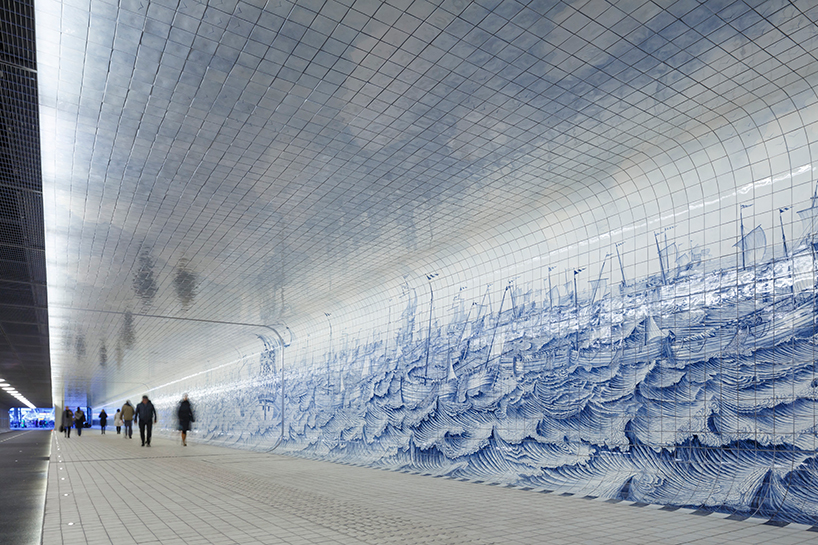
benthem crouwel clads amsterdam’s cuyperspassage in 80,000 delft blue tiles
all images © jannes linder
benthem crouwel has completed a much-needed cycle and pedestrian tunnel at amsterdam central station, connecting the city to the waters of the IJ-river. used by some 15,000 commuters daily, ‘cuyperspassage’ has been a long-awaited edition to the urban fabric, finally linking two otherwise impassable areas in a direct line.
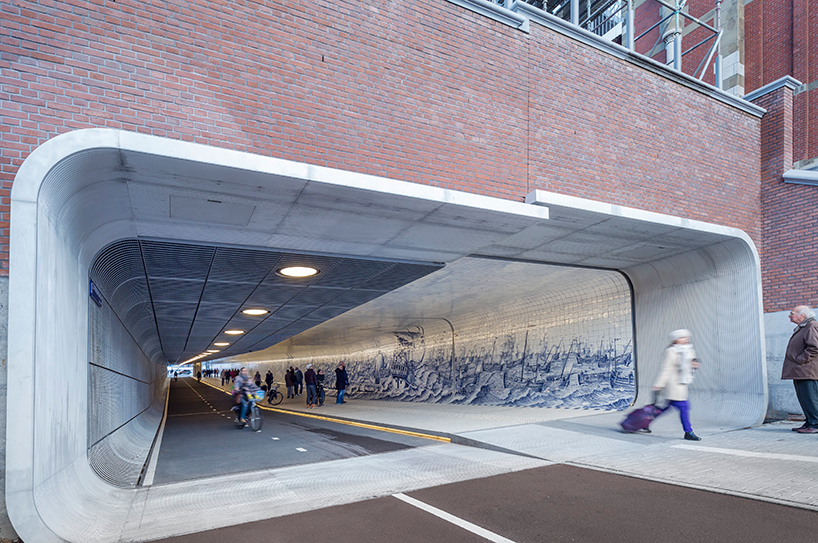
the pedestrian level is raised above the cycleway, allowing walkers to feel safe
the tunnel — which is 110 meters long, ten meters wide and three meters high — forms a clear division between the two modes of travel used, distinguished by height, color and material. while the pedestrian level is raised above the cycleway, allowing walkers to feel safe and removed from the busy bike traffic, riders enjoy a spacious, rapid through route, where LED lights illuminate the edge of the path. areas for foot traffic are accompanied by a smooth finish of handmade glazed ceramic tiles, whereas bike lanes have a rougher finish of black, sound-absorbing asphalt and steel gratings.
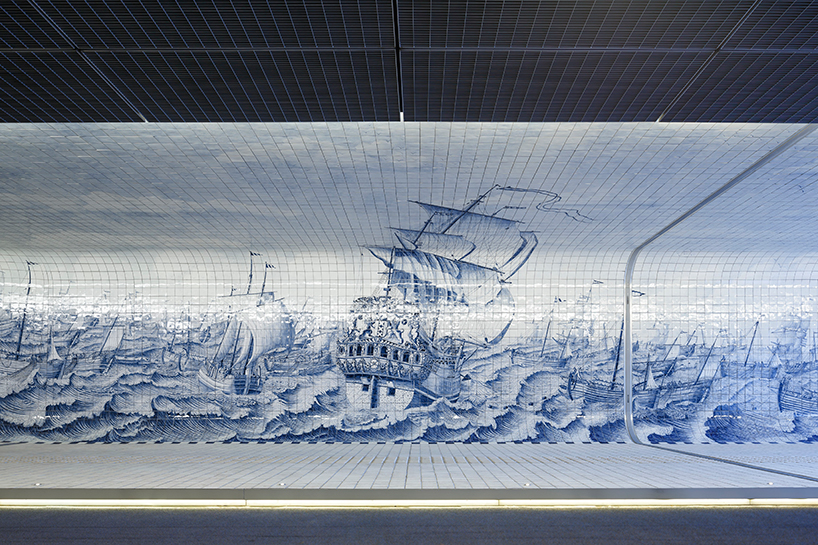
a graphic tableau by amsterdam-based designer irma boom accompanies the footpath
along the wall of one side of the tunnel is a graphic tableau by dutch designer irma boom. made up of nearly 80,000 delft blue tiles, the composition references a restored work by tile painter cornelis boumeester, whose panel depicting the warship rotterdam and the herring fleet is in the collection of the rijksmuseum, amsterdam. irma boom replaced the original crest on the stern with the amsterdam coat of arms, and added large and small merchant vessels, herring busses, churning waves, and seagulls.
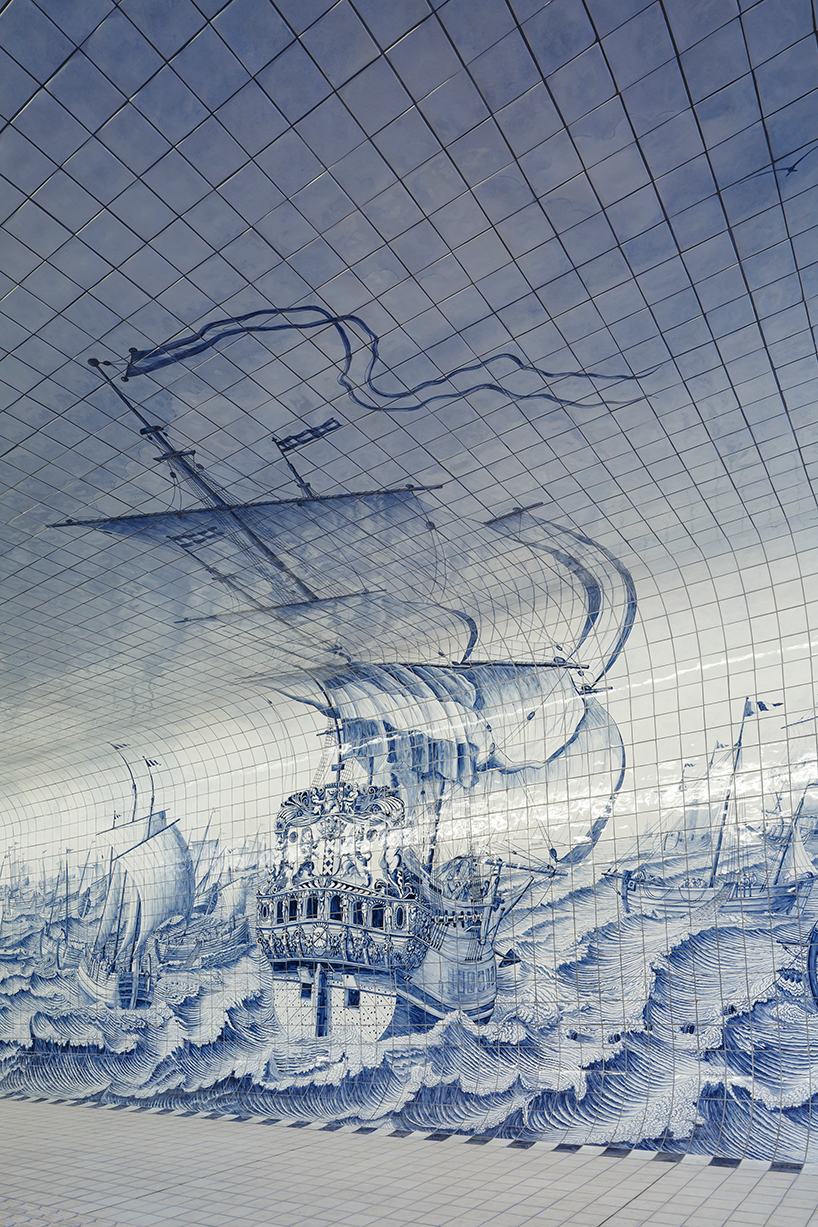
the graphic panel depicts large and small vessels, herring busses, churning waves, and seagulls
as cyclists and pedestrians make their way through ‘cuyperspassage’, the tableau slowly fades away towards the IJ-river, before building up again in an abstract gradient of light to dark blue. the transition from drawn lines to pixels visualizes the journey from the historic district to ‘new amsterdam’, while simultaneously referencing a movement from old to new artistic styles.
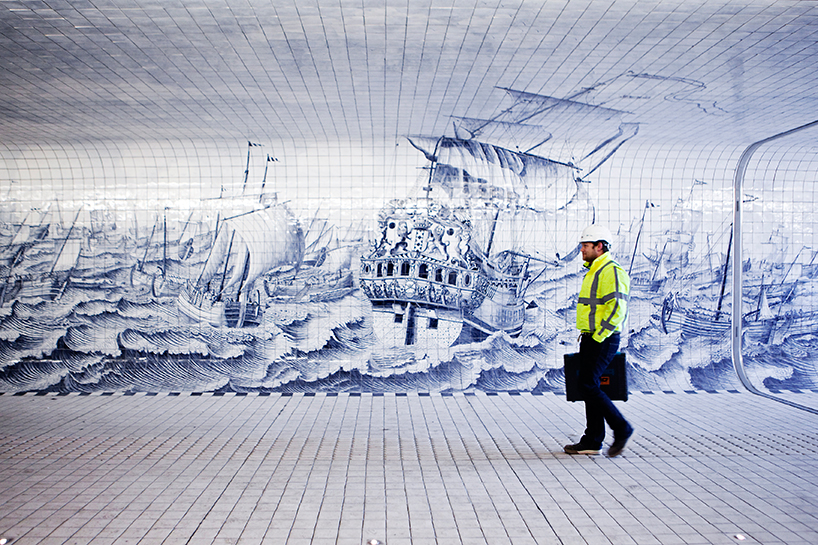
the tunnel is clad with nearly 80,000 delft blue tiles
ceramic company royal tichelaar makkum spent five years crafting the 46,000 wall tiles for the tableau and 33,000 for the floor, made in the traditional dutch tile size of 13 x 13 cm. overall, the composition recalls historic kitchens in local canal houses that give the impression of an urban-scale room, making the tunnel feel like a safe and familiar place.
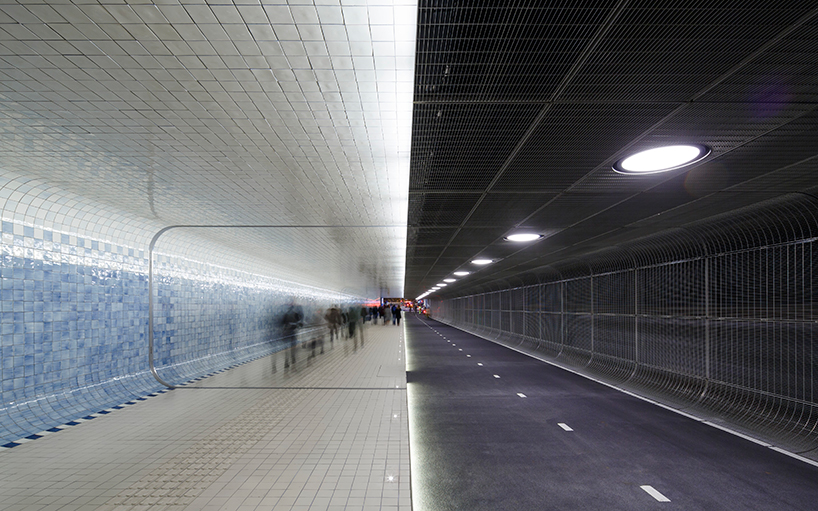
a clear division between the two modes of travel is distinguished by height, color and material
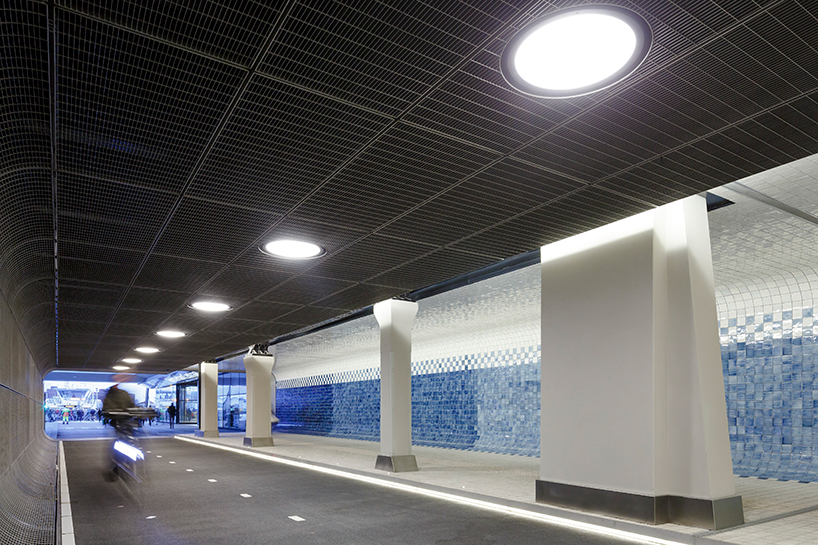
as commuters journey through ‘cuyperspassage’, the tableau slowly changes into an abstract composition
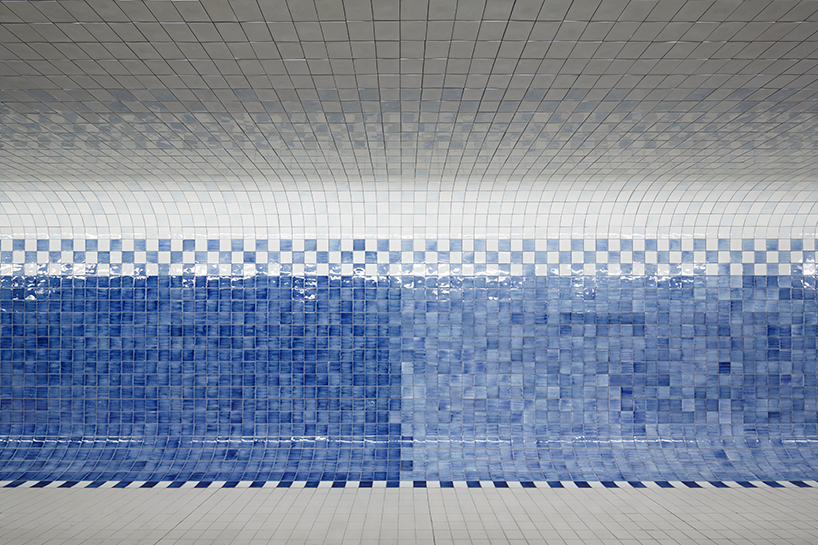
the transition from drawn lines to pixels visualizes the journey from the historic district to ‘new amsterdam’
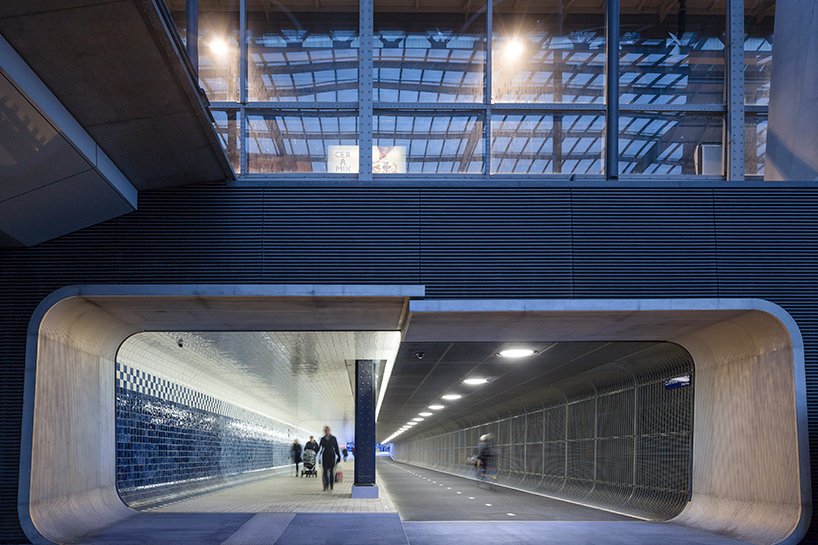
overall, the scheme relays the impression of an urban-scale room
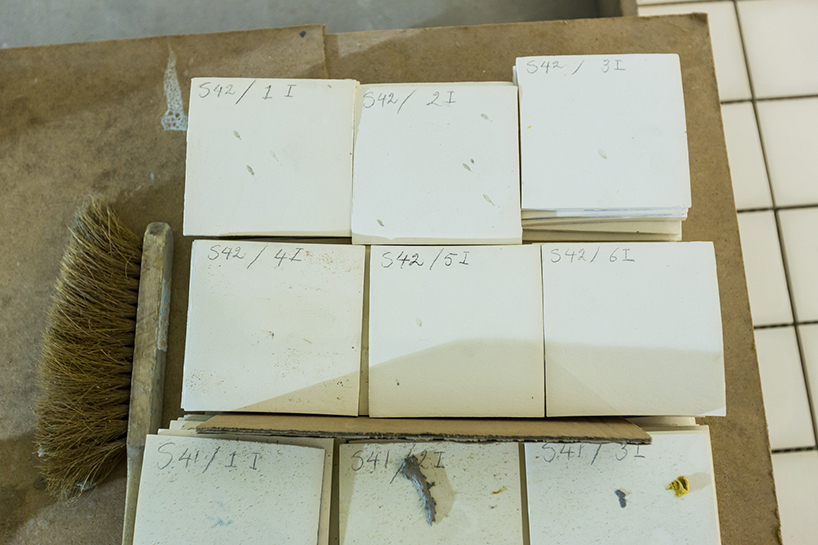
the ceramic company spent five years crafting 80,000 tiles for the project
